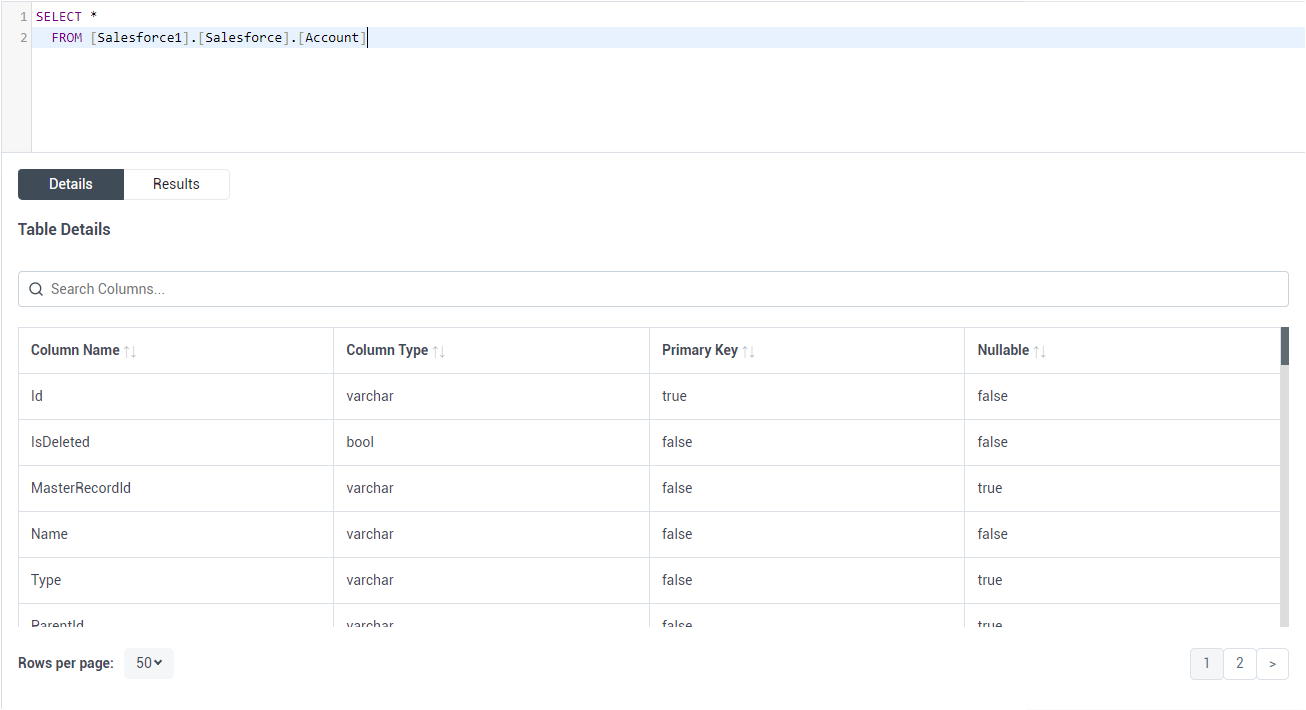Discover how a bimodal integration strategy can address the major data management challenges facing your organization today.
Get the Report →Connect to Microsoft Planner Data as an External Data Source using PolyBase
Use CData Connect Cloud and PolyBase to create an external data source in SQL Swerver with access to live Microsoft Planner data.
PolyBase for SQL Server allows you to query external data by using the same Transact-SQL syntax used to query a database table. When paired with the CData ODBC Driver for Microsoft Planner, you get access to your Microsoft Planner data directly alongside your SQL Server data. This article describes creating an external data source and external tables to grant access to live Microsoft Planner data using T-SQL queries.
NOTE: PolyBase is only available on SQL Server 19 and above, and only for Standard SQL Server.
CData Connect Cloud provides a pure SQL Server interface for Microsoft Planner, allowing you to query data from Microsoft Planner without replicating the data to a natively supported database. Using optimized data processing out of the box, CData Connect Cloud pushes all supported SQL operations (filters, JOINs, etc.) directly to Microsoft Planner, leveraging server-side processing to return the requested Microsoft Planner data quickly.
Configure Microsoft Planner Connectivity for PolyBase
Connectivity to Microsoft Planner from PolyBase is made possible through CData Connect Cloud. To work with Microsoft Planner data from PolyBase, we start by creating and configuring a Microsoft Planner connection.
- Log into Connect Cloud, click Connections and click Add Connection
- Select "Microsoft Planner" from the Add Connection panel
-
Enter the necessary authentication properties to connect to Microsoft Planner.
You can connect without setting any connection properties for your user credentials. Below are the minimum connection properties required to connect.
- InitiateOAuth: Set this to GETANDREFRESH. You can use InitiateOAuth to avoid repeating the OAuth exchange and manually setting the OAuthAccessToken.
- Tenant (optional): Set this if you wish to authenticate to a different tenant than your default. This is required to work with an organization not on your default Tenant.
When you connect the Driver opens the MS Planner OAuth endpoint in your default browser. Log in and grant permissions to the Driver. The Driver then completes the OAuth process.
- Extracts the access token from the callback URL and authenticates requests.
- Obtains a new access token when the old one expires.
- Saves OAuth values in OAuthSettingsLocation to be persisted across connections.
![Configuring a connection (Salesforce is shown)]()
- Click Create & Test
-
Navigate to the Permissions tab in the Add Microsoft Planner Connection page and update the User-based permissions.
![Updating permissions]()


Add a Personal Access Token
If you are connecting from a service, application, platform, or framework that does not support OAuth authentication, you can create a Personal Access Token (PAT) to use for authentication. Best practices would dictate that you create a separate PAT for each service, to maintain granularity of access.
- Click on your username at the top right of the Connect Cloud app and click User Profile.
- On the User Profile page, scroll down to the Personal Access Tokens section and click Create PAT.
- Give your PAT a name and click Create.
- The personal access token is only visible at creation, so be sure to copy it and store it securely for future use.

Create an External Data Source for Microsoft Planner Data
After configuring the connection, you need to create a credential database for the external data source.
Creating a Credential Database
Execute the following SQL command to create credentials for the external data source connected to Microsoft Planner data.
NOTE: Set IDENTITY to your Connect Cloud username and set SECRET to your Personal Access Token.
CREATE DATABASE SCOPED CREDENTIAL ConnectCloudCredentials WITH IDENTITY = 'yourusername', SECRET = 'yourPAT';
Create an External Data Source for Microsoft Planner
Execute a CREATE EXTERNAL DATA SOURCE SQL command to create an external data source for Microsoft Planner with PolyBase:
CREATE EXTERNAL DATA SOURCE ConnectCloudInstance WITH ( LOCATION = 'sqlserver://tds.cdata.com:14333', PUSHDOWN = ON, CREDENTIAL = ConnectCloudCredentials );
Create External Tables for Microsoft Planner
After creating the external data source, use CREATE EXTERNAL TABLE statements to link to Microsoft Planner data from your SQL Server instance. The table column definitions must match those exposed by CData Connect Cloud. You can use the Data Explorer in Connect Cloud to see the table definition.

Sample CREATE TABLE Statement
Execute a CREATE EXTERNAL TABLE SQL command to create the external table(s), using the collation and setting the LOCATION to three-part notation for the connection, catalog, and table. The statement to create an external table based on a Microsoft Planner Tasks would look similar to the following.
CREATE EXTERNAL TABLE Tasks( TaskId COLLATE [nvarchar](255) NULL, startDateTime COLLATE [nvarchar](255) NULL, ... ) WITH ( LOCATION='MicrosoftPlanner1.MicrosoftPlanner.Tasks', DATA_SOURCE=ConnectCloudInstance );
Having created external tables for Microsoft Planner in your SQL Server instance, you are now able to query local and remote data simultaneously. To get live data access to 100+ SaaS, Big Data, and NoSQL sources directly from your SQL Server database, try CData Connect Cloud today!








